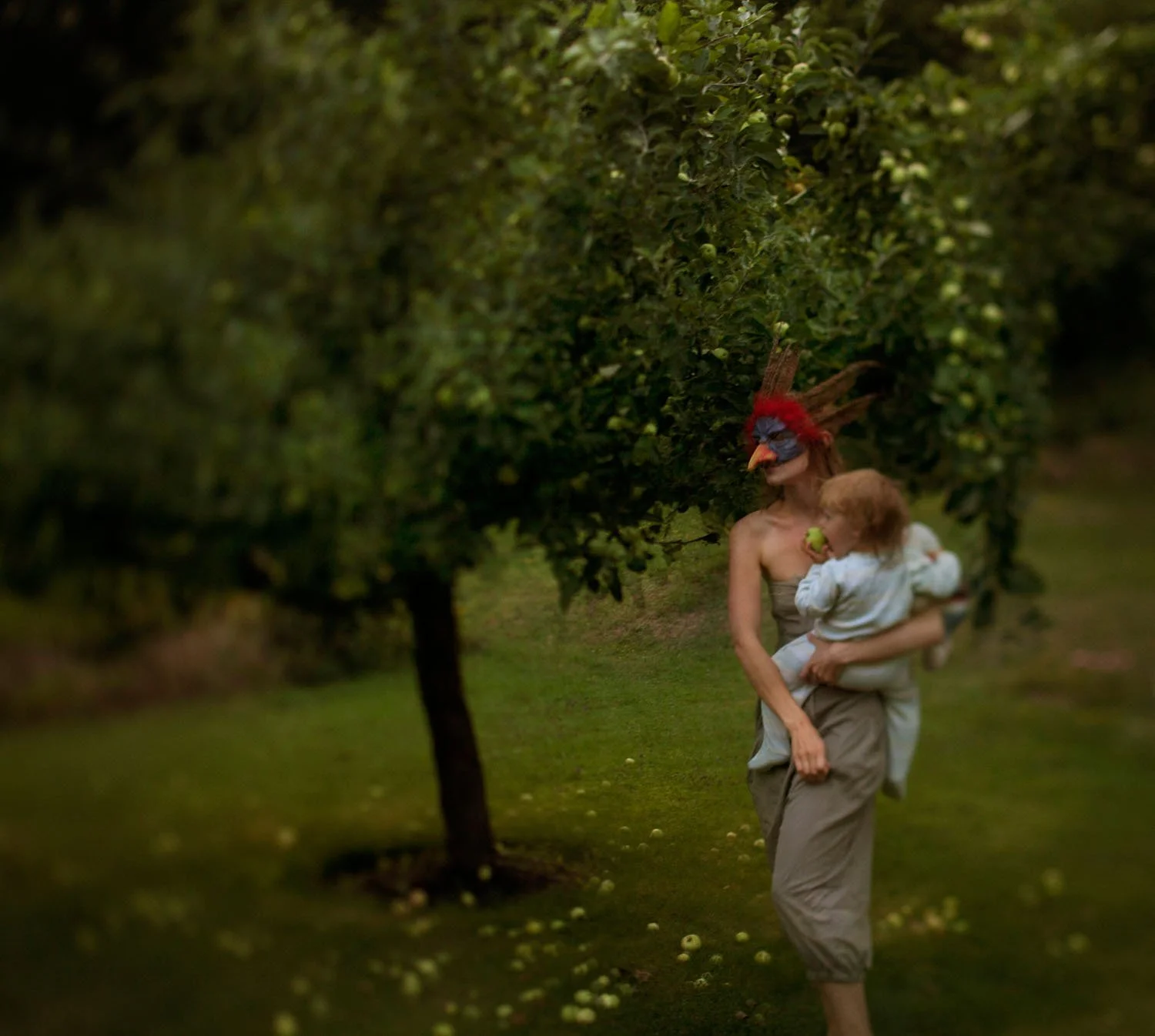Om fotografi og morsrollen
Store deler av mitt kunstnerskap dreier seg om familiebånd, oppvekst og morsrollen. Da jeg selv ble gravid vokste det fram tanker og følelser rundt min egen identitet knyttet til det å være kvinne, opp mot min kommende rolle som mor. Jeg satt med en følelse av ambivalens, da jeg opplever at synet på kvinnen i norden er i konstant utvikling, mens morsrollen ikke endres like fort, og hvordan dette skaper en ambivalens for mange kvinner. Jeg begynte fotografere endringene jeg gikk igjennom, med et håp om å forstå hva som skjer med identiteten og selvbildet når vi får barn.
En interessant faktor jeg ble oppmerksom på, er hvordan scenografien for moderskapet allerede er satt lenge før et barn er født. Vi blir fortalt og vist hvordan det skal, og burde, se ut og forme seg. Med en gang barnet inntreder verden, blir vår egen historie, og det faktum at tiden går, mer synlig. Nye grener legges til familietreet, barna finner sin egen plass i historien og setter sine egne fotspor. Det er så så mye av helheten i komplekset som kan fanges og formes i sin egen unikhet.
—————————————————————————————————————————————————————————————————————————————————
Big parts of my own practice surrounds family, childhood, evolvement and motherhood. When I myself became pregnant, thoughts and feelings around my own identity attached to womanhood, against my coming role as a mother, grew. I sat with a feeling of ambivalence, with feelings about the view of the “modern woman” in the north is in constant development and changing, while the view of the mother is more static. I started photographing the changes I went through, bot physical and mentally, with a hope of getting a better understanding of what happens with our (my) identity and self image when we get children.
An interesting thing I became aware of, is how the scenography of motherhood is already created long before the child is born. We get told and showed how motherhood should look like and how it should evolve. But at once the child is bored, our own stories, and the fact of time passing, becomes more visible. New branches are added to the family tree, the children find their own place in history and leave their own footsteps. There is only so much of the whole in the complex that can be captured and shaped in its own uniqueness.
